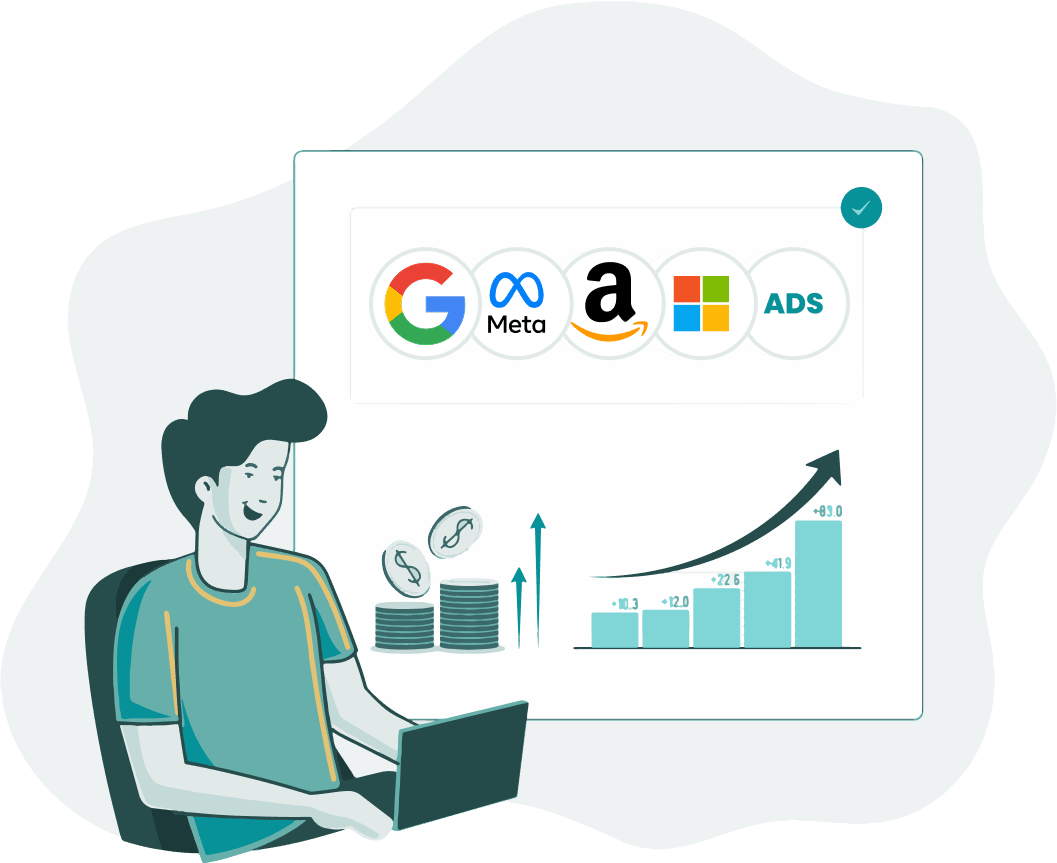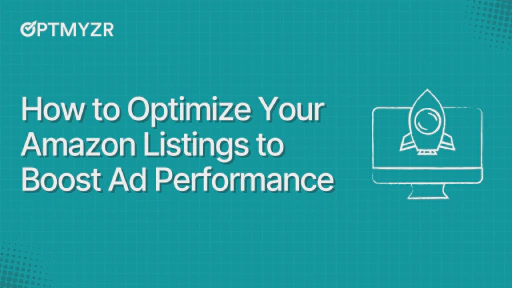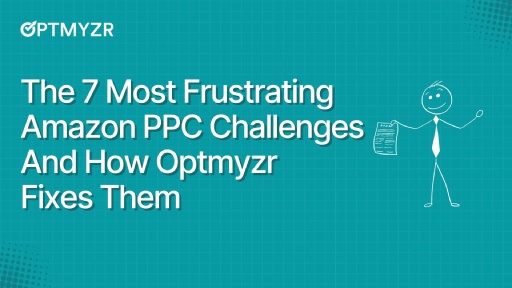Without the right campaign structure, your Amazon ads are flying blind. It becomes difficult to know what’s working well and how efficiently your budget is being spent. Whether it’s lumping too many keywords together or blending match types, small missteps can snowball into inefficiency.
In this blog, we’ll explore how to structure your campaigns for maximum ROI, common mistakes to avoid, and practical tips to control performance and spend.
Why a proper campaign structure is important to drive ROI
A proper campaign structure is key to profitably scaling your ads in a competitive marketplace. Segmenting your campaigns by product lines, match types, and keyword intent gives you complete visibility into what’s working and what’s not. It’s about setting your campaigns up for long-term success.
Having a good campaign structure also helps you:
- Identify top-performing segments easily and allocate budgets efficiently
- Track the performance of your Amazon ads with clear insights into ACoS, ROAS, and TACoS by group
- Adjust bids, scale winners, or pause underperforming campaigns
- Set smarter based on how likely a keyword or audience is to convert
- Optimize product listings more effectively for targeting and ad relevance, so your ads show up in the right searches and convert better
Common mistakes when structuring Amazon campaigns
- Mixing high/low performers (products or keywords) in one campaign: High performers can eat up the budget and mask low performers, giving limited visibility into what’s actually working.
- Overstuffing ad groups with too many SKUs: Grouping too many SKUs in one ad group can dilute impressions. With limited data per SKU, Amazon’s algorithm may struggle to identify and prioritize top-performing products.
- Blending match types in a single ad group: Each match type behaves differently, and blending them makes it harder to know which search terms are coming from which match type, making it tough to optimize bids or add negatives properly.
- Misusing single keyword campaigns (SKAGs) without reason: Although you get more precise control with SKAGs, overusing them without proper intent simply bloats your account structure and makes it difficult to scale.
- Vague naming: If your campaigns, ad groups, or products are not named correctly, reporting becomes very confusing because you lose track of what each campaign is supposed to do.
How to structure Sponsored Product campaigns
Here are a few things to keep in mind when structuring Sponsored Product campaigns.
1. Naming conventions
- Use consistent, easy-to-understand, and descriptive names. You should be able to easily identify the product, campaign type, and targeting strategy.
- Include product/ASIN, campaign type, match type, objectives, and bid adjustments if needed.
- Use delimiters to separate elements.
Your naming structure should look like:
[Product Name]_[ASIN]_[Campaign Type]_[Targeting Type]_[Objective]_[Bid Adjustment]
2. Match type segmentation
Create separate campaigns for different match types for better performance insights, bidding, and budget allocation.
How to implement match type segmentation for your campaigns:
- Pick your keyword or product category. Let’s take Running Shoes.
- Create three different campaigns for each match type
- Campaign 1: “Running Shoes – Broad”
- Campaign 2: “Running Shoes – Phrase”
- Campaign 3: “Running Shoes – Exact”
- Add the same keyword to each campaign, but use the correct match type in each.
- Broad match: running shoes
- Phrase match: “running shoes”
- Exact match: [running shoes]
- Set different bids as needed. For instance, since exact match type is more targeted, it can get a higher bid.
Why this helps:
- You can easily identify which match type works best.
- You get better budget control.
- No overlap between your own keywords.
3. Keyword grouping
Structure campaigns or ad groups so that similar types of keywords are grouped together. You can segment by:
Brand vs Non-brand:
- Separate your keywords that include your brand name (e.g. nike running shoes) from generic terms (e.g. men’s running shoes) since brand terms usually have higher conversion rates.
- Use negative keywords to clearly separate them. For example, you can add your brand as a negative keyword in non-brand campaigns.
High vs Mid intent:
- High-intent keywords signal strong purchase intent, while mid-intent terms come from shoppers still in the consideration phase.
- Compare high-intent vs mid-intent groups on metrics like spend, CTR, ACoS, and ROAS.
- If high-intent terms perform well, increase bids or budget, and expand with similar keywords.
- If mid-intent terms underperform, add negatives, refine copy, or use ASIN targeting to reach more relevant product pages.
Top keywords vs long-tail
- Top keywords are individual words, phrases, or product categories customers use to search for products.
- Long-tail keywords are specific, detailed, lower-volume terms, e.g., “trail running shoes for flat feet”.
- Top keywords give you reach and data, making it important for long-term growth and visibility. Group them into dedicated campaigns with sufficient daily budgets so your highest-impact terms stay active all day.
- Putting long-tail keywords in a separate campaign helps improve ad relevance and uncover ‘hidden gem’ search terms. Since these keywords are detailed but flexible, they trigger related searches. Reviewing your search term report then reveals specific, high-converting terms with low ACoS you might have otherwise missed.
💡Pro Tip: Optmyzr’s Top Traffic Driving Keywords Audit allows you to identify top keywords by clicks. You can group these keywords into dedicated campaigns with strong budgets to maximize visibility and avoid mid-day budget exhaustion. |
4. ASIN grouping
- Putting too many SKUs in a single ad group may lead them to compete, and your top performers might not get enough visibility. Plus, it becomes harder to adjust bids based on margins or conversion rates of different SKUs.
- If you want to reduce wasted spend, get more actionable data, and set more accurate bids, it’s better to group your SKUs by:
- Similar price points or margins
- Product lifecycle (e.g., launch, mature)
- Performance tier (e.g., hero products vs. support products)
5. Auto campaigns
Auto campaigns can be used as a keyword discovery tool. They allow Amazon’s algorithm to automatically target search queries that are likely to result in conversions.
- Run auto campaigns for a few weeks to get insights into high-performing, high-intent keywords that Amazon finds relevant for your products.
- Once you have a list of such terms, move the top 20% of terms with high conversion rates into manual campaigns for better bidding and targeting control.
- Don’t forget to add negative keywords to auto campaigns to prevent keyword cannibalization and wasted spend.
Also Read: How Optmyzr Users Automate Amazon PPC
Use portfolios for better control
Think of a portfolio as a folder that contains a specific set of campaigns with a shared objective. It brings order and control to your Amazon ads strategy, especially when campaigns scale. It helps you set shared budgets, create reports by portfolio, and track performance at a higher level.
When using portfolios, you can group campaigns by:
- Product line (e.g., skincare, supplements)
- Funnel stage (e.g., brand awareness vs. conversion)
- Ad type (Sponsored Products, Display, Brands)
How to structure other ad types
Here’s a quick overview of how you can structure other ad types in Amazon.
1. Sponsored Brands
- Use Case: Branded keyword coverage, top-of-search visibility
- Structure Tip: Segment campaigns by keyword themes (e.g., branded vs category), and tailor creative by product group or landing page type (Storefront vs Product Collection).
2. Sponsored Display
- Use Case: Retargeting, competitor conquesting, category targeting
- Structure Tip: Separate campaigns by audience type (views, interests, product targeting), and group ASINs by pricing tier or conversion data.
3. Sponsored TV
- Use Case: High-impact, upper-funnel brand awareness
- Structure Tip: Structure around audience personas or lifestyle segments; creative variations should match each segment’s interests and behaviors.
Bidding strategies for profitability
Using the right bidding strategies is key for profitability when advertising on Amazon.
You can start by setting your initial bids based on keyword intent and competition.
- High-intent keywords are likely to get higher conversions, so it makes sense to set higher bids for them.
- On the other hand, it’s better to be cautious when bidding for upper-funnel or broader terms because they are less likely to result in conversions.
Next, you can choose your bidding strategy based on the level of control you need and your goals.
- Fixed bids give you greater control and may be better for testing or when you have a limited budget.
- Dynamic (up/down) bidding allows Amazon’s algorithm to raise or lower bids based on the likelihood of conversions. It can be efficient when optimized correctly.
That’s where ACoS (Advertising Cost of Sales) comes in. It tells you how much you’re spending on ads to generate each dollar of revenue. A lower ACoS means more profitable conversions, while a high ACoS may signal wasted spend. Simply put, it’s not just about whether a keyword converts. It’s about whether it converts efficiently.
To act on this, tools like Optmyzr’s Bid Adjustment Optimization let you automatically increase bids for keywords that are performing below your target ACoS (cost-effective), and decrease bids for those above it (inefficient). This removes the guesswork from bid management and ensures your budget is focused on the terms that actually contribute to profitability.
{{< figure src="/forestry/change-bids-based-on-acos-amazon-ads-in-optmyzr.webp" alt=“Change bids based on ACoS - Amazon Ads in Optmyzr” >}}
Bid optimization tips
- For better ROI, make small, incremental changes to your bids (between 5-10%) to test performance over time
- Monitor key indicators like CTR, CPC, ROAS, and TACoS weekly to see whether your bids are delivering expected results. You can easily set up KPI and budget alerts to get notified these metrics shift—so you can act fast or roll back changes.
- Use search term reports to identify irrelevant keywords or high-converting search queries
Take control of your Amazon ads with better structure and smarter tools.
Implementing a proper campaign structure for your Amazon ads ensures you have clear control over your budgets, bids, and performance.
A key part of this is consistently auditing and refining your campaigns so you can accurately identify what’s working and what needs improvement. Optmyzr’s powerful tools streamline these processes by automating bid adjustments, running in-depth audits, and providing actionable insights.
Sign up for Optmyzr’s free 14-day trial and explore how you can optimize your Amazon PPC campaigns for better ROI.









